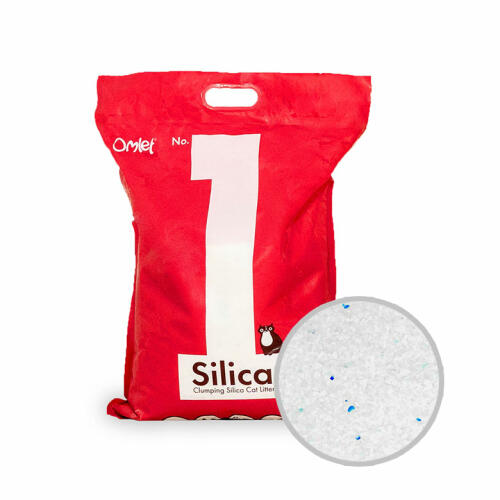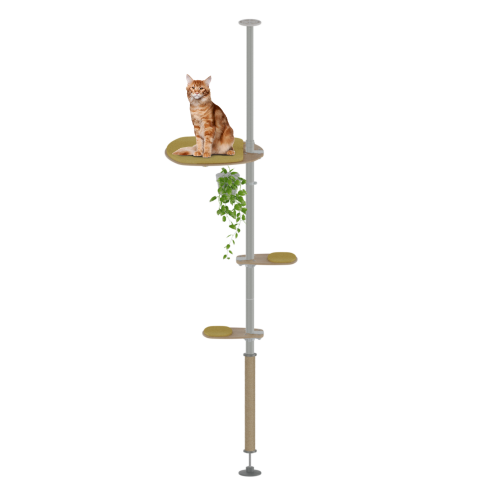Parasites can affect almost any living thing. From trees to humans there is always an organism that has evolved to feed off the biological success of others. By definition parasites are any living organisms that live on or in another organism by acquiring nutrients at the host’s expense.
Cats are certainly not immune to parasites and below we will go through the four most common parasites in cats.

A lovely young ginger and white kitten itching
Fleas
Fleas are the number 1 most common parasite to infect cats. You may be disgusted to find out that fleas will infest both your cat and your home. Spotting them early and treating your cat quickly is vital if you want to avoid replacing furniture and carpets, as well as having an unhappy cat.
Infection
Cats catch fleas off each other, other animals and from furniture or carpets that are infested. Fleas live on the fur of animals and can jump over 30 cm, this means they can easily jump between animals with close contact. This is why cats can become infected with fleas so easily.
The female flea can lay up to 50 eggs a day on the skin of a cat. With so many eggs being laid it is easy for eggs to fall off the cat and onto any furniture, carpets or cat beds. These eggs hatch and develop from larvae into adult fleas which detect any warm blooded animal in close proximity and jump onto them.
Signs and Symptoms
Below is a list of common signs and symptoms that your cat has fleas:
- Intense scratching and/or biting of their fur
- Patchy fur or hair loss
- Constant grooming
- Restlessness
- Avoidance of their bed and/or carpeted areas (if they associate these areas with more flea bites then they may be conditioned to avoid them)
- Skin lesions, scaly skin, red patches, rashes and scabby areas on the skin
- Little black specs in your cat’s fur (flea faeces)
- Small red/brown/black insects in the cat’s fur - the actual fleas
- Muscle loss, lethargy, pale gums - in serious cases where the fleas are enough of a problem to reduce the red blood cell count
Treatment
Fleas are really easy to treat and flea medicine can be bought online, in pet shops or from your vet. The most common type of flea treatment is a spot on treatment that is usually combined for fleas, ticks and sometimes ear mites too. For more information on how to apply spot on treatments click here and then scroll down to the bottom of the page.

A tabby cat itching its face with its back foot
Ticks
Ticks are a fairly common parasite that are usually found on cats in the Spring or Summer months.
Infection
They lie in wait on tall grass or bushes for a warm blooded animal to pass by. At this point they latch on and crawl down through the fur and use their mouthparts to attach themselves to the skin of their host. Here they will feed on the animal’s blood and swell up to the size of a pea.
Signs and Symptoms
Cats will show very little symptoms if they have a tick. The best way to know if your cat has a tick is to give them a full body check regularly. Ticks are most commonly found around the head or neck and may resemble a skin tag. They have grey, brown, black or creamy appearance and can be very small (pin head), or fairly large (size of a large pea), and everything inbetween.
Treatment
Because ticks don’t reproduce as quickly as fleas you will usually only find one tick on your cat - particularly if you are checking regularly. If this is the case and your cat doesn’t have fleas then the simplest treatment is to remove the tick. This can be done by yourself or your vet - if you have any worries then you should get your vet to remove the tick because an improperly removed tick can lead to infection or abscess. For more information on tick removal click here.
If you think your cat may have multiple ticks and/or fleas then you should consider using a spot on medication to treat these parasites. Spot on treatments offer constant protection from ticks by poisoning and killing them after they bite the cat. This may be the most suitable treatment if your cat is regularly getting ticks. For more information on applying spot on treatments to your cat click here and then scroll down the page a litte.
Ear Mites
A lot of people are surprised when they hear that ear mites are a common parasite for cats. These little critters live in the ear (both in and out of the ear canal) and feed off the skin and oils secreted by the ear.
Infection
Ear mites are easily passed between all animals. For example a cat can easily be infected by a rodent that it has caught, if that rodent had ear mites. Fortunately humans don’t get infected with ear mites so you shouldn’t be itching your ears whilst reading this.
Signs and Symptoms
Below is a list of some common signs and symptoms that could indicate ear mites:
- Regular shaking of the head
- Constant itching of the ears
- Raw, bloody and sore patches around the ears (from incessant scratching)
- Smelly ears
- Waxy/Dirty ears
If your cat shows one or more of these symptoms then the best thing to do is take them to the vet for a check up.
Treatment
Ear mites are pretty straight forward to treat but may require a vet visit. Some spot on treatments will kill ear mites but if you take your cat to the vet then they will probably prescribe some ear drops which can also be bought online or from pet shops. For information on how to give your cat ear drops click here and for spot on treatments click here.
Worms
Roundworms, Tapeworms and Hookworms can all infect cats. By far the most common are the Roundworm species: Toxocara cati and Toxascaris leonina, but all worms require similar treatment and show similar symptoms.
Infection
Cats become infected with worms when they ingest the worm’s eggs, if an infected flea bites them, or if they eat an animal that is already infected (intermediate host). Cats that are infected will have worms living in their large intestine and will release worm eggs in their faeces.
It is extremely common for kittens to become infected with Toxocara cati Roundworms when suckling, because worms can be passed on from mother to kitten via the milk. This happens when an infected mother has worm larvae dormant in her body tissue that move to the mammary glands when she is pregnant. Because this is so common it is assumed that all kittens are infected and need worming treatment before leaving for a new home.
Signs and Symptoms
Below is a list of symptoms that may indicate your cat is infected with a type of worm:
- Pot bellied appearance
- Regular vomiting
- Loose or bloody stools
- Diarrhoea
- Reduced energy levels
- Appearance of segments or eggs in stool
- Pain in abdomen
- Itchy bottom
Treatment
Worms are treated by giving your cat deworming medicine. There is a huge variety of products that usually come in liquid or pill form. They can be bought online, in pet shops or from your vet. These medicines will kill the worms but do not offer lasting protection so you will need to re-administer the medicine if you suspect your cat has been re-infected. For more information on how to administer pills and liquid medication to your cat click here.







Komentarze
W tej sekcji nie ma jeszcze komentarzy